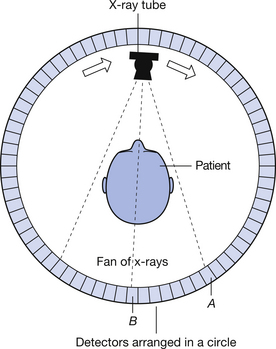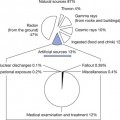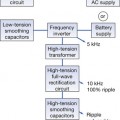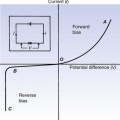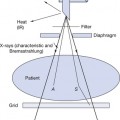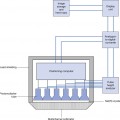Chapter 38 CT scanning
Chapter contents
38.1 Aim
The aim of this chapter is to provide its readers with an overview that will enable them to understand the basics of the complex computed tomography (CT) scanning process.
38.3 The development of the CT scanner
The third-generation scanners were known as the rotate–rotate design. The width of the radiation beam and the arc of the detectors was increased to 60°. The geometry of the detector arc produced a constant source to detector distance, an advantage in image reconstruction, and also permitted better beam collimation reducing scatter formation. The increased detector arc had the effect of reducing time per slice to the order approximately 1 second, substantially reducing the risk of motion artifacts. The one major disadvantage with this system was that the failure of a single detector would result in the production of a ‘ring’ artefact. This could often be corrected by the image processing software.
The current (fourth-generation) scanners (see Figure 38.1) have what is sometimes termed a stationary–rotate geometry, in which the X-ray tube rotates within a stationary circle of detectors. The earlier sodium iodide scintillation detector linked to a photomultiplier tube has been replaced by ceramic scintillation detectors. These detectors have a better response to radiation of the energy range used in CT. The photomultipliers have been replaced by solid-state photodiodes. The photodiode is far smaller than the photomultiplier tube and requires considerably less power to operate.
38.4 Scanner subsystems
38.4.2 The gantry
The gantry (see Fig. 38.1) consists of a large box-like structure with a central aperture through which the patient is passed during the scan. Within the gantry are the X-ray tube, HT transformer, rectification system, collimators, detectors and the motor drive and control system to move the X-ray tube during the scan.
